Buyer's Guide to Movie Memorabilia
Written by Alexander Bitar
Movie memorabilia are items that possess value due to their connection to the cinema, such as but not limited to costumes, props, scripts, posters, or signed items. Learn more about movie memorabilia by reading this guide.
A collection of various movie memorabilia items.
It is a relatively new sector of collecting, with the technology to produce films only being available for a little over a century. Nonetheless, one cannot find the world of cinema to be fascinating, as movies are perhaps one of the most significant components of modern Western culture. Objects from historical films have the ability to transport us to a fantasy world of another time, which is likely why collecting movie memorabilia has grown from a niche small-scale hobby to a massive business, with millions of dollars being exchanged at big-name auction houses such as Sotheby's, Julien's Auctions, Heritage Auction, and Christie's.
Follow these easy steps to appraise your Movie Memorabilia items.
What is Movie Memorabilia and Why is it Valuable?
As such a wide range of objects and paraphernalia fall under the category of movie memorabilia, it can be challenging to gauge whether or not your item qualifies for any value. Typically, the items that will reach the higher hammer prices at auction are those associated with old Hollywood as opposed to new. Autographs from recent and still living celebrities, as well as more contemporary unsigned photographs, will be worth very little, if anything at all, and the same goes for commercial 16mm and 8mm films, sheet music, and records made after 1975. Items worth a significant amount are screen-worn costumes, annotated scripts, unpublished or candid photos of major film stars, props from classic movies, original art by entertainment celebrities, and more.
The range of items that can be found under this category is expansive, featuring anything from costumes, props, scripts, posters, signed items, and much more. With film still being a comparatively recent phenomenon, the film-collecting business is not only among the newer sectors of the collecting market but also highly lucrative. As movies are perhaps one of the forerunners of our modern-day visual culture, it is easy to see why so many are fascinated by anything related to them.
Do you own music memorabilia items you want to know the value of? Press here for more information.
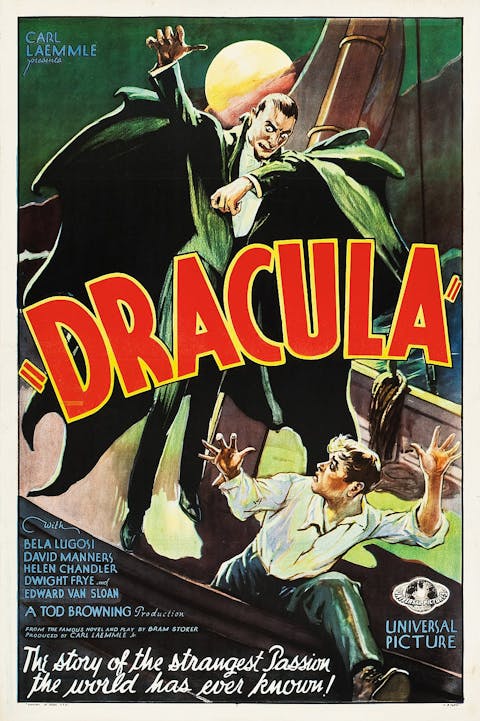
Movie poster for Dracula, 1931. (Public Domain)
Why Movie Memorabilia?
In order to be able to understand why film memorabilia is so popular, one must first look into the world of film and cinema itself. While the advent of film is unclear, many accredit its success and popularization to the Lumière brothers, who publicly screened a series of short films in Paris on December 28, 1895. It wasn't long after this that film production studios began popping up across the world, and the motion picture rapidly evolved from a mere novelty to a multi-billion dollar industry. By the 1910s and onward, people who did not regularly frequent the movie theater were in the minority, and film became a major component of people's lives no matter their background.
This phenomenon continues to hold with modern audiences, with virtually everyone in first-world countries and beyond watching dozens of movies per year. Therefore, it is only natural that people are transfixed by the physical relics and trophies that come out of films, which serve to represent tangible ephemera from a fantasy world; it is this fascination that fuels the film memorabilia sector of the auction industry for so many people.
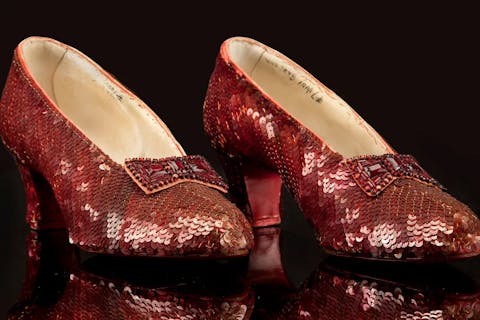
The iconic ruby slippers from The Wizard of Oz, 1939. (Profiles in History)
The Beginnings of the Business
Fans and collectors desire items because of their cultural and historical relevance, insight into the celebrity world, and sentimental value. In the beginning phases of this industry, collectors tended to be interested only in autographs, posters, or photographs. For access to the trade, they relied on a small number of news magazines that featured a variety of sellers offering mail-order catalogs, in addition to the occasional live auction event. In these early days, the community was reasonably sporadic and disconnected, as dealers and collectors were spread out worldwide with no reliable way to communicate quickly.
The film industry itself did not immediately recognize the value of such items, which they thought to be taking up valuable space, and iconic props were often stored away and forgotten about or even destroyed. Workers at this time had full access to film production items, and some could take trophy objects as souvenirs or sell them without their employers caring. One such person was the costume designer Kent Warner, most well-known for taking possession of the famous ruby slippers from The Wizard of Oz.
Follow these easy steps to appraise your Movie Memorabilia items.
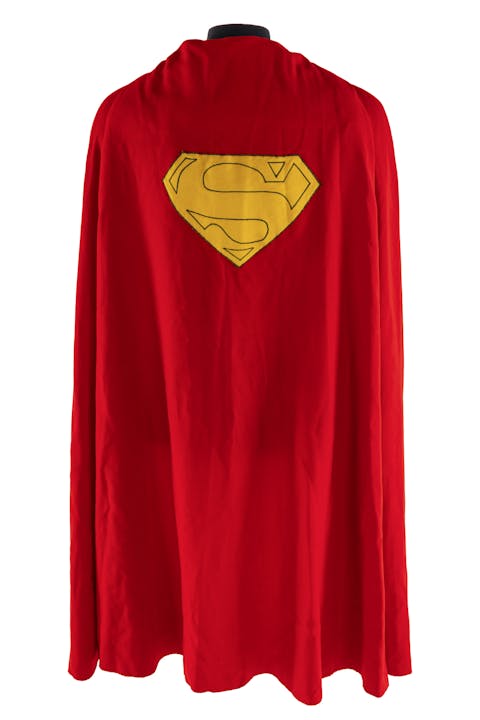
Christopher Reeve's Superman cape worn during DC Comics contest, 1979. (Julien's Auctions)
A Turning Point in the Industry
The catalyst for realizing the tremendous economic value laid latent in the film memorabilia collecting hobby was the 1970 MGM Auction. James Thomas Aubrey Jr., the new studio president, decided to hold an event in which hundreds of thousands of items would be auctioned off to consolidate space and bring in a little extra revenue to the company. He sold over 350,000 costumes alone and tens of thousands more props to an auctioneer for a mere 1.5 million dollars. The event brought in eight times that amount, resulting in an explosive moment for the film studio company. Still, it was a milestone event that marked the turning point for film scholars and the auction business, as a new primary market was created for an area of collecting that was previously only existent amongst a few film enthusiasts and hobbyists.
The Influence of Modern Technology
As with any other community, film memorabilia collecting has grown increasingly widespread, accessible, and better connected since the advent and availability of the internet. Buyers and sellers alike found the ease of communication via various online platforms, such as Usenet newsgroups, MoPo, and most withstanding of all, eBay. Ebay became the foremost alternative market by 1997, with many professional sellers closing their traditional businesses in order to focus on selling via the website. The availability of online information has also allowed the market to stabilize, as it is easy to compare lot prices with those of similar items.
Today, with the extraordinary presence of film media in our culture, it isn't easy to imagine a time without its pervasive influence in our lives. When one looks at film memorabilia, one is reminded of the history of cinematic culture, what these items meant during their own time, and what it means to us today. Whether it's a 1960 Time Machine, a Frankenstein poster, or Dorothy's ruby slippers, these objects have a story to tell – what makes the film memorabilia market so interesting!
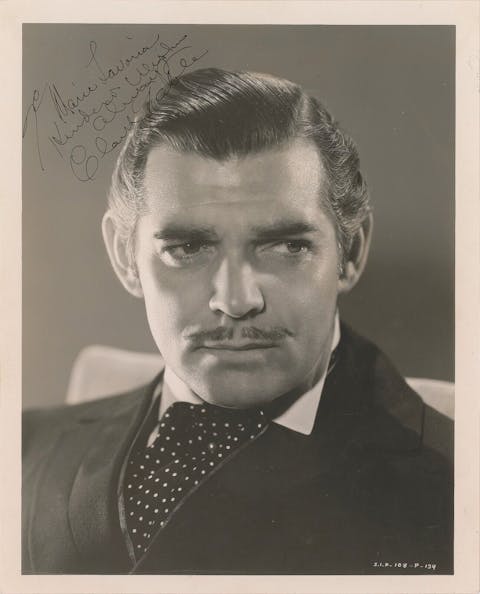
A Clark Gable signed and inscribed Gone with the Wind, 1939, photograph. (Alexander Bitar History)
Condition and Rarity
Its condition is among the many influential factors of your film memorabilia's worth. No buyer wants to invest in an item rendered useless or unattractive by damage sustained over time or poor handling, so the more new your item is, the more value it will support. However, as film memorabilia often features one-of-a-kind objects, some exceptions to this rule can be made if your item is scarce, as ultimately, this factor of rarity will eventually determine its overall value.
The Most Expensive Movie Memorabilia Ever Sold
1. Aston Martin DB5 from Goldfinger (1964) – sold for $6,385,000.
2. Robby the Robot from Forbidden Planet (1956) – sold for $5,375,000.
3. Marilyn Monroe's white dress from The Seven Year Itch (1955) – sold for $4,600,000.
4. Batmobile from Batman (1966) – $4,200,000.
5. The Maltese Falcon from The Maltese Falcon (1941) – sold for $4,100,000.
6. Audrey Hepburn's Ascot Dress from My Fair Lady (1964) – sold for $3,700,000.
7. Sam's Piano from Casablanca (1942) – sold for $3,400,000.
8. Lion Costume from The Wizard of Oz (1939) – sold for $3,070,000.
9. R2D2 Model from Star Wars (1977) – sold for $2,760,000.
10. Themed Fabergé Egg from Game of Thrones (2011) – sold for $2,200,000.
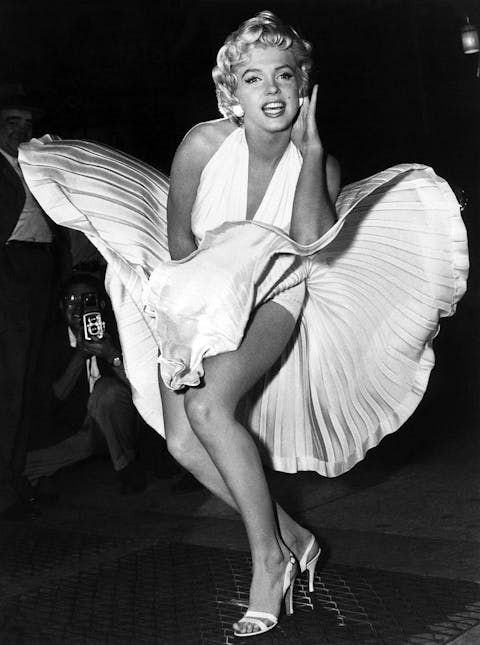
Marilyn Monroe's white dress from The Seven Year Itch, 1955. (Public Domain)
How To Appraise Movie Memorabilia
Objects from historical films have the ability to transport us to a fantasy world of another time, which is likely why collecting movie memorabilia has grown from a niche small-scale hobby to a massive business, with millions of dollars being exchanged at big-name auction houses. Thus, it is essential to seek professional consultation when determining an estimated value for your film memorabilia and seek appraisal.
Only an expert in film memorabilia appraisal and valuation can apply their years of training and experience to find the most accurate estimate possible. Luckily, expert appraisers here at Value My Stuff can lead your valuation efforts today! Follow these easy steps to appraise your movie memorabilia items.

